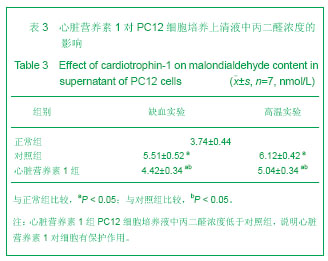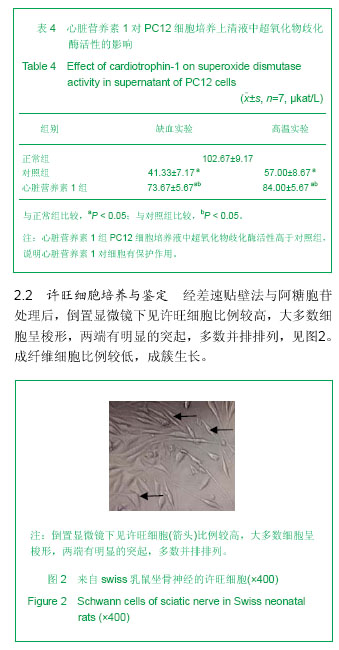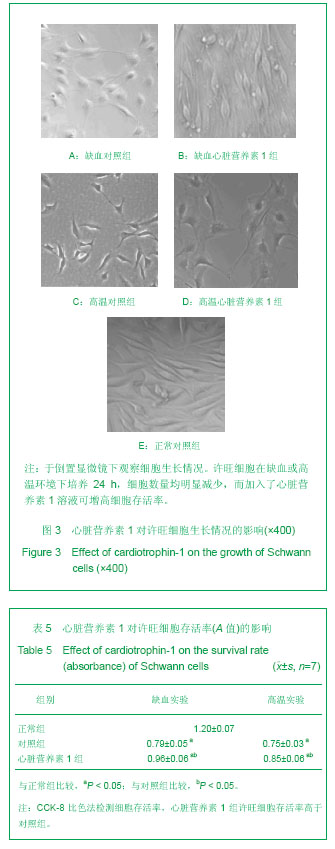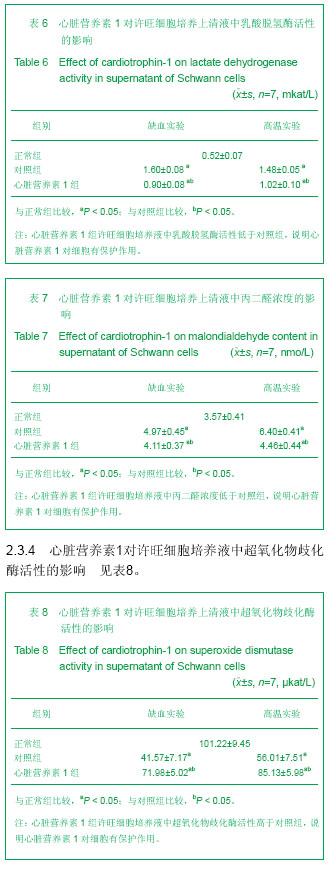| [1] 张大鹏,潘世奇,侯明明等.周围神经损伤后最佳修复时间时机的选择[J].中国组织工程研究与临床康复,2010,14(20): 3726-3729.
[2] Fernandez-Espejo E. Pathogenesis of Parkinson's disease:prospects of neuroprotective and restorative therapies. Mol Neurobiol. 2004;29(1):15-30.
[3] Pennica D, Shaw KJ, Swanson TA, et al. Cardiotrophin-1. Biological activities and binding to the leukemia inhibitory factor receptor/gp130 signaling complex. J Bio Chem. 1995; 270(18):10915-10922.
[4] 马学晓,张高孟,冯勇,等.心脏营养素1对失神经骨骼肌的营养和保护作用[J].中华手外科杂志,2006,22:112-115.
[5] Hongkui Jin, Renhui Yang, Gilbert A. Keller Anne Ryan, et al. In vivo effects of cardiotrophin-1. Cytokin. 1996;8(12): 920-926.
[6] Jiménez-González M, Jaques F, Rodríguez S, et al. Cardiotrophin 1 protects beta cells from apoptosis and prevents streptozotocin-induced diabetes in a mouse model. Diabetologia. 2013;56(4):838-846.
[7] Quiros Y, Sánchez-González PD, López-Hernández FJ, et al. Cardiotrophin-1 administration prevents the renal toxicity of iodinated contrast media in rats. Toxicol Sci. 2013;132(2): 493-501.
[8] Bustos M, Dubrot J, Martinez-Anso E, et al. Cardiotrophin-1 determines liver engraftment of syngenic colon carcinoma cells through an immune system-mediated mechanism. Oncoimmunology. 2012;1(9):1527-1536.
[9] García-Cenador MB, Lopez-Novoa JM, Díez J, et al. Effects and mechanism of organ protection by cardiotrophin-1. Curr Med Chem. 2013;20(2):246-256.
[10] ThierNichael, Hall Mark, Heath JK, et al. Trophic effects of cardiotrophin-1 and interleukin-11 on rat dorsal root ganglion neurons in vitro. Molecular Brain Res. 1999;64(1):80-84.
[11] Wollert KC, Taga T, Saito M, et al. Cardiotrophin-1 activates a distinct form of cardiac muscle cell hypertrophy. J Biol Chem. 1996;271(16):9535-9545.
[12] Heinrich PC, Behrmann I, Muller-Newen G, et al. Interleukin- 6- type cytokine signalling through the gp130/Jak/STAT pathway. Biochem J. 1998;334(Pt 2):297-314.
[13] Ruiz-Hurtado G, Gómez-Hurtado N, Fernández-Velasco M, et al. Cardiotrophin-1 induces sarcoplasmic reticulum Ca(2+) leak and arrhythmogenesis in adult rat ventricular myocytes. Cardiovasc Res. 2012;96(1):81-89.
[14] Li T, Wiggins LM, von Bartheld CS. Insulin-like growth factor-1 and cardiotrophin 1 increase strength and mass of extraocular muscle in juvenile chicken. Invest Ophthalmol Vis Sci. 2010;51(5):2479-2486.
[15] 张正丰,廖维宏,杨青峰.重组心脏营养素-1对成年大鼠坐骨神经损伤后脊髓前角运动神经元存活的研究[J].中华实验外科杂志, 2004,21(1):116.
[16] Oppenheim RW, Wiese S, Prevette D, et al. Cardiotrophin-1, a muscle-derived cytokine, is required for the survival of subpopulations of developing moto neurons. J Neurosci. 2001;21(4):1283-1291.
[17] Wang D, Li X, Gao K, et al. Cardiotrophin-1 (CTF1) ameliorates glucose-uptake defects and improves memory and learning deficits in a transgenic mouse model of Alzheimer's disease. Pharmacol Biochem Behav. 2013;107: 48-57.
[18] Shu X, Du S, Chen X, Li Z. Transplantation of neural stem cells overexpressing cardiotrophin-1 inhibits sprouting of hippocampal mossy fiber in a rat model of status epilepticus. Cell Biochem Biophys. 2011;61(2):367-70.
[19] Grumbles RM, Sesodia S, Wood PM, et al. Neurotrophic factors improve motoneuron survival and function of muscle reinnervated by embryonic neurons. J Neuropathol Exp Neurol. 2009;68(7):736-46.
[20] Habecker BA, Sachs HH, Rohrer H, et al. The dependence on gp130 cytokines of axotomy induced neuropeptide expression in adult sympathetic neurons. Dev Neurobiol. 2009;69(6):392-400.
[21] Sango K, Yanagisawa H, Komuta Y, et al. Neuroprotective properties of ciliary neurotrophic factor for cultured adult rat dorsal root ganglion neurons. Histochem Cell Biol. 2008; 130(4):669-679.
[22] 杨云华,廖维宏,伍亚民,等.腺病毒介导的心肌营养素-1基因转染对神经干细胞作用的实验研究[J].中国脊柱脊髓杂志,2005, 15(6): 361-364.
[23] Sakamoto T, Kawazoe Y, Shen JS, et al. Adenoviral gene transfer of GDNF, BDNF and TGF beta 2, but not CNTF, cardiotrophin-1 or IGF1, protects injured adult motoneurons after facial nerve avulsion. J Neurosci Res. 2003;72(1):54-64.
[24] Bordet T, Lesbordes JC, Rouhani S, et al. Protective effects of cardiotrophin-1 adenoviral gene transfer on neuromuscular degeneration in transgenic ALS mice. Hum Mol Genet. 2001; 10(18):1925-1933.
[25] Tang XQ, Feng JQ, Chen J, et al. Protection of oxidative preconditioning against apoptosis induced by H2O2 in PC12 cells: Mechanisms via MMP, ROS and Bcl-2. Brain Res. 2005; 1057(1-2):57-64.
[26] Zhan Y, Ma DH, Zhang Y. Effects of cotransplantated Schwann cells and neural stem cells in a rat model of Alzheimer’s disease. Neura Regen Res. 2011;6(4): 245-251.
[27] Ye FG, Li HY,Qiao GX, et al. Platelet-rich plasma gel in combination with Schwann cells for repair of sciatic nerve injury. Neural Regen Res. 2012;7(29): 2286-2292.
[28] 侯春梅,李新颖,叶伟亮,等.MTT法和CCK-8法检测悬浮细胞增殖的比较[J].军事医学科学院院刊,2009,33(4):400-401.
[29] Latchman DS. Cardiotrophin-1: a novel cytokine and its effects in the heart and other tissues. Pharmacol Ther. 2000; 85(1):29-37.
[30] López N, Díez J, Fortuño MA. Characterization of the protective effects of cardiotrophin-1 against non-ischemic death stimuli in adult cardiomyocytes. Cytokine. 2005; 30(5): 282-292.
[31] Zvonic S, Hogan JC, Arbour-Reily P, et al. Effects of cardiotrophin on adipocytes. J Biol Chem. 2004;279(46): 47572-47579.
[32] 李同欢,李振宏,杜淑珍,等.Adv-CT1转染对神经元的作用[J].遵义医学院学报,2010,33(5):428-430. |







.jpg)
.jpg)